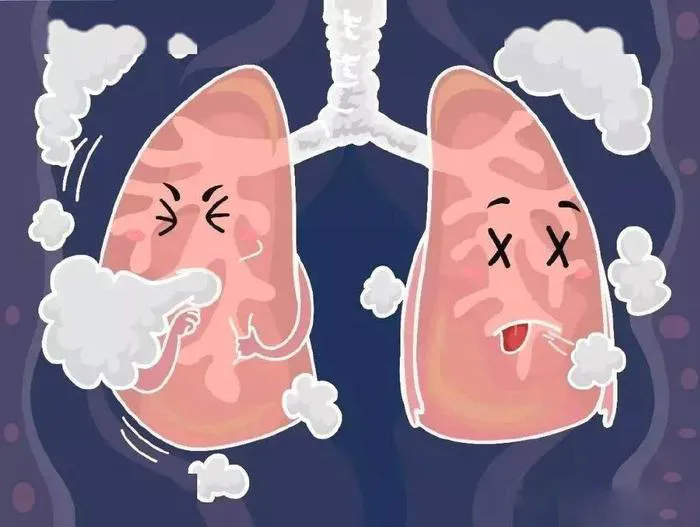Main occupational hazards in welding work
Ⅰ. Electric welding fume
Electric welding fume is a mixed dust of extremely fine particles or aerosols formed by the high temperature of the arc generated during welding operations. When its time-weighted average permissible concentration (PC-TWA) exceeds 4mg/m3, it will damage the health of workers.
Short-term inhalation of high-level electric welding fume can cause dizziness, headache, chest tightness, cough and other irritation effects

Long-term inhalation of electric welding fume reaches the lungs, causing respiratory diseases such as lung tissue fibrosis, welder pneumoconiosis, and lung cancer

Small welding particles will pass through the blood-gas barrier and spread to different tissues and organs, inducing cardiovascular system damage, reproductive system damage, liver lesions, etc.
Ⅱ. Main heavy metals
Manganese
Long-term inhalation of high-concentration manganese fume can induce chronic manganese poisoning, and can also cause pneumoconiosis, rhinitis, etc. (PC-TWA: 0.15mg/m3)

Chromium
Acute chromium poisoning can cause burning congestion, nose bleeding, etc.; chronic chromium poisoning is mainly manifested as dermatitis and rhinitis. (PC-TWA: 0.05mg/m3)
Nickel
Nickel poisoning is mainly manifested as dermatitis and respiratory damage. Nickel-containing welding fumes can cause symptoms similar to metal fume fever. (PC-TWA: 1.0mg/m3)
III. Harmful gases
Ozone
Low concentration contact surface induces bronchitis; high concentration contact causes pneumonia or emphysema, and its maximum allowable concentration (MAC) is 0.3mg/m3.
Nitrogen oxides
Mainly cause pulmonary edema. (PC-TWA: 5mg/m3)
Carbon monoxide
Causes nervous system dysfunction. (PC-TWA: 10mg/m3)
IV. Ultraviolet radiation
Mainly damages the eyes and skin of workers, and the degree of damage varies depending on the wavelength of ultraviolet rays.

V. Laser radiation
Lasers or sparks generated during welding can cause welders' eye dysfunction, decreased vision or even blindness, cataracts, and photoelectric conjunctivitis. When the energy or power is large enough, it can cause skin burns.

VI. Noise
The noise level during welding far exceeds the national standard of 85dB(A). Long-term exposure to this environment will cause irreversible damage to the human ear, such as hearing loss and occupational noise-induced deafness.
VII. High-frequency electromagnetic field
The main manifestations are neurosis of varying severity. People working near strong magnetic fields have symptoms such as general weakness, dizziness, fatigue, and chest tightness.
Musculoskeletal injury is an occupational injury that is often overlooked.
From the perspective of occupational ergonomics, welding work requires maintaining a certain posture or position, which can cause musculoskeletal injury for a long time.
It is worth noting that different welding processes produce different occupational hazards.
For example, the welding fume of gas metal arc low-carbon steel welding is mainly composed of Fe and contains a small amount of Mn, while the welding fume of manual metal arc stainless steel welding contains Fe and Mn as well as a large amount of Cr and Ni;
Non-melting inert gas shielded arc welding produces high-frequency electromagnetic fields, ultraviolet radiation, and harmful gases, while argon arc welding is more harmful than general electric welding and can produce harmful gases such as ultraviolet rays, infrared radiation, ozone, carbon dioxide, carbon monoxide, and welding fume containing heavy metals.
How to control the hazards of electric welding operations
1. Optimize welding processes and materials
2. Personal protection
Workers should wear personal protective equipment such as protective masks, dust masks, protective clothing, hearing protectors, insulating gloves and insulating rubber shoes when working
3. Improve the working environment
Strengthen natural ventilation and machine-assisted ventilation
4. Occupational health monitoring
Develop occupational health monitoring plans and systems, and establish and improve occupational health monitoring files
5. Strengthen professional knowledge education and training for workers
Improve the awareness and ability of welders to protect against occupational hazards
-
What are the advantages and disadvantages of argon arc welding?NewsJul.02,2025
-
Deadly Fire at Hangzhou Ice and Snow World Kills SixNewsJul.01,2025
-
Welding defectsNewsJun.30,2025
-
Your Trusted Welding Electrode Manufacturer for Quality and InnovationNewsJun.27,2025
-
Top-Tier Performance with ER70S-6 Welding RodNewsJun.27,2025
-
Premium stainless steel electrode for Superior Welding PerformanceNewsJun.27,2025


